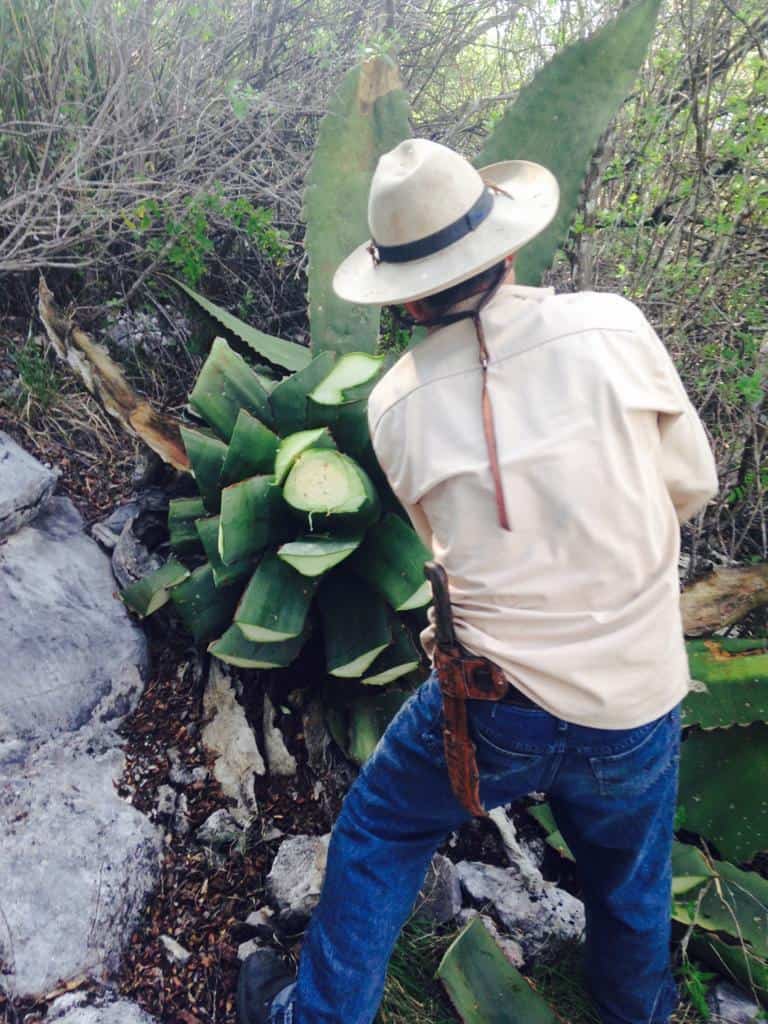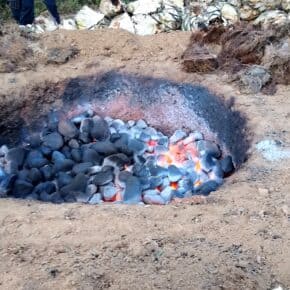Usually you hear that someone has used the capon technique on an agave, where they cut off the quiote just as it starts to emerge from the heart of the plant in order to concentrate as much sugar as possible. But in Max Rosenstock’s article about the limited edition Aniceto Garcia / NETA / Mezcalistas special batch collaboration Max referenced a new term to us.
Aniceto harvests Tepextate en guía that has matured but has not yet started to shoot its flowering stalk. Through the accumulation of generations of knowledge and nearly 50 years of hands-on experience, he knows that this agave is to be worked differently than other species in order to extract a maximum amount of aromas, flavors, and overall yield.
Max Rosenstock on Aniceto Garcia’s limited edition Tepextate
Literally translated “en guia” means ‘guide’ so perhaps it’s a reference to the upcoming quiote sprouting out, a potential bit of allusion to what’s about to happen. I chatted with Rosenstock a bit more about this practice because I was curious about why people do it. He told me that: “I know a few people that prefer to work their tepextate en guía and not capon, and there is a family near Logoche that only harvests espadin en guia. They mash with mazos and say that well cooked capon espadin is too soft and weird to work with. I think they lose some juices and end up with a lower yield as a result.” Rosenstock also noted that “Lalo Angeles once mentioned preferring to harvest en guia because the high sugars were a guarantee. When you leave it capon, it can become prone to infestation and sugars can lessen over time.”
One of the most fascinating things about this is that it reveals so much nuance in how distillers approach their craft. I’ve heard many distillers explain their use of capon agaves as a way to guarantee concentrating sugars, the same as what Lalo told Rosenstock about his use of en guia. My point is that every distiller has a very unique approach and that most are informed by cultural traditions and their individual adaptations which may have tremendous variance and have little empirical backing but that this may not matter one bit because what they’re doing works. Put another way, we frequently labor under the received wisdom that only a single approach to a problem works or that only a single empirical explanation is valid and that’s not necessarily true, especially when it comes to something as elemental as mezcal.














Leave a Comment